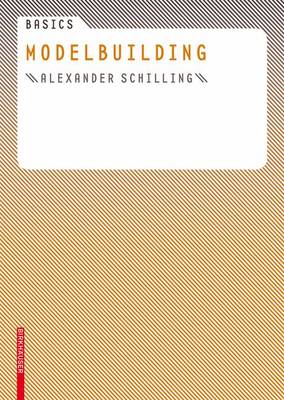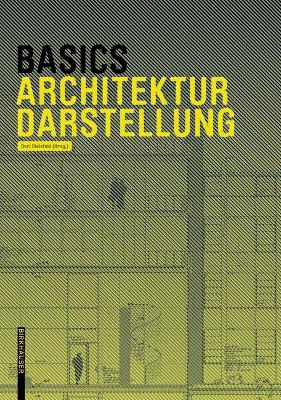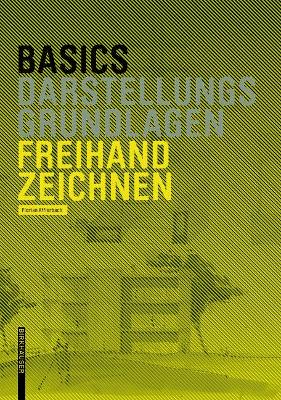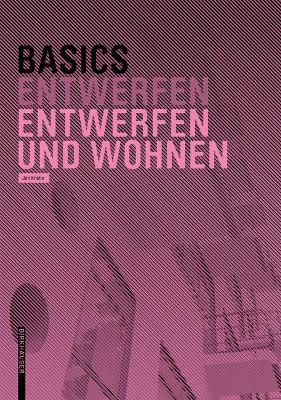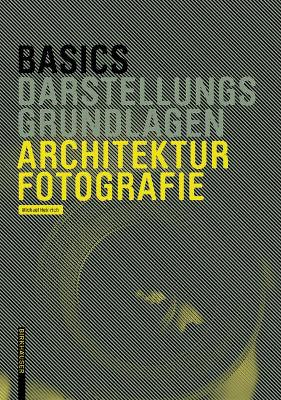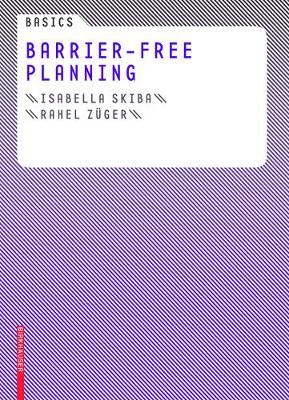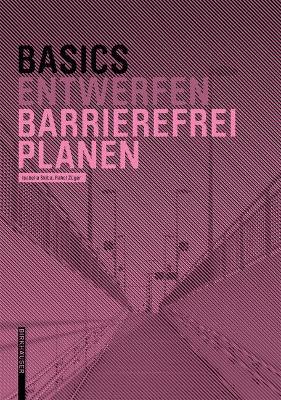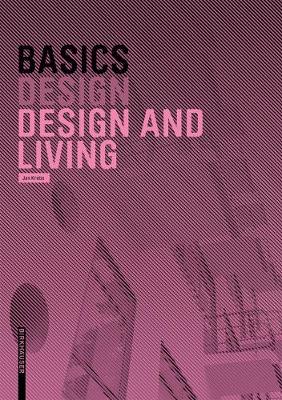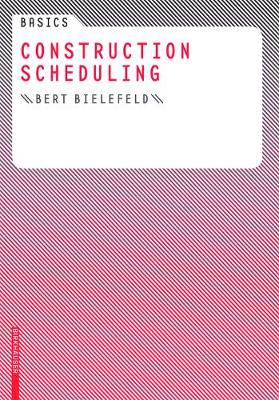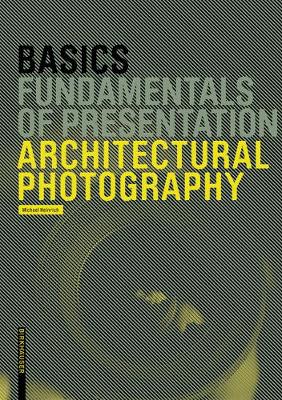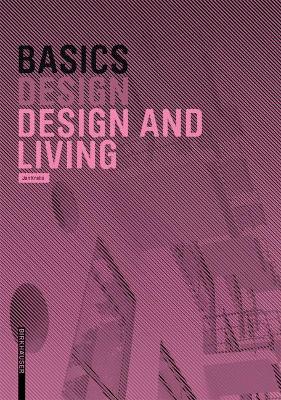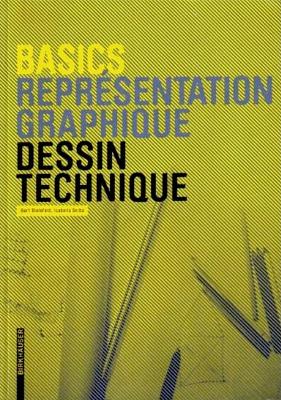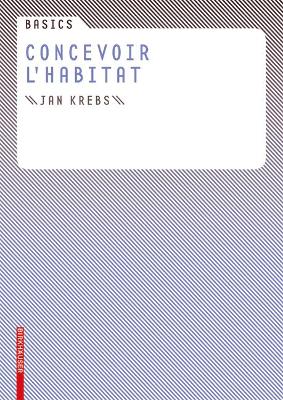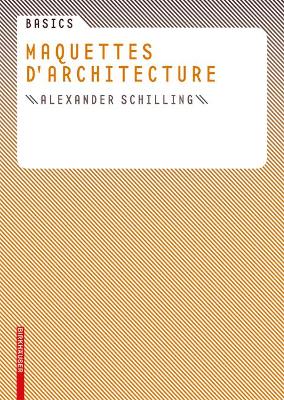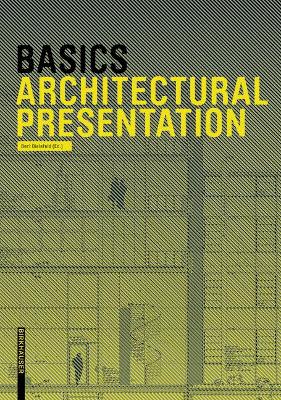Basics
17 total works
Basics Architekturdarstellung
by Bert Bielefeld, Isabella Skiba, Florian Afflerbach, Michael Heinrich, Jan Krebs, and Alexander Schilling
However, there are important issues to consider between the phases of devising the spatial concept and recreating it in a two- or three-dimensional drawing or physical model: How to construct a perspective freehand drawing? What plan drawings are necessary to present my design? What scale should my model be and what materials should I use to construct it?
Basics Architectural Presentation combines the highly successful single volumesTechnical Drawing, CAD, Modelbuilding, and Architectural Photography from the series BASICS with a yet to be published volume entitled Freehand Drawing. Step-by-step, it conveys possible ways to present architectural projects throughout the various project phases. In an informative and practical approach, the publication discusses the basics of architectural representation from freehand drawing, which is especially important in the design phase, to the plan drawing, model, and architecture photography. The student architect learns the tools necessary for presenting his or her work, supported by many concrete examples and practical tips that are directly applicable.
Basics Freehand Drawing explains step-by-step how to develop a perspective drawing from the initial structure of the image to various drawing techniques and use of color. It also shows in numerous color illustrations different drawing techniques and examples of presenting perspective drawings of buildings, interiors, and details.
Themes:
Concepts and kinds of cohabitation and dwelling Residential functions The creation of living space Design in housing construction
Basics Architectural Photography provides a practically based explanation of the key technical aspects of photography, image analysis and photo editing, and includes helpful tips on how to take and process photographs.
Topics:
Photographic concepts (focal length, image circle, angle of view, depth of focus, exposure time, contrast range, etc.) Equipment (camera, lens, tripod, light meter, etc.) Photographing architecture (perspectives, architectural models, etc.) Stylistic devices in architectural photography Exterior shots Interior shots Image editing, scanning, image correction
Themes:
Concepts and kinds of cohabitation and dwelling Residential functions The creation of living space Design in housing construction
Technisches Zeichnen beschaftigt sich mit der Darstellung von Planungen in allen Projektphasen. Der Schwerpunkt fur Studenten liegt hier auf der Entwicklung und dem methodischen Aufbau einer technischen Zeichnung.
Themen:
Planarten (vom Lageplan uber Entwurfszeichnungen bis hin zum Ausfuhrungs- und Detailplan)Planelemente (Grundriss, Schnitt, Ansicht, Detail)Linienstarken, Vermassung, Schraffuren, Beschriftung, SymbolePlandarstellungen und -zusammenstellung
Themes:
Levels of abstraction and degrees of detail Model typologies Typical working tools and techniques Materiality of models Presentation possibilities
Topics:
Organizing the planning and construction process The basics of scheduling Goal-oriented presentation formats and levels of detail Developing a schedule Using schedules in the real world
Basics Architectural Photography provides a practically based explanation of the key technical aspects of photography, image analysis and photo editing, and includes helpful tips on how to take and process photographs.
Topics:
Photographic concepts (focal length, image circle, angle of view, depth of focus, exposure time, contrast range, etc.) Equipment (camera, lens, tripod, light meter, etc.) Photographing architecture (perspectives, architectural models, etc.) Stylistic devices in architectural photography Exterior shots Interior shots Image editing, scanning, image correction
Themes:
Concepts and kinds of cohabitation and dwelling Residential functions The creation of living space Design in housing construction
Themes:
Types of plan (from site plan and preliminary drawings to design and detail plans)
Components of the plan (floor plan, section, elevation, detail)
Line width, dimensioning, hatching, use of text, symbols
Plan presentation and compilation
Themes:
Concepts and kinds of cohabitation and dwelling Residential functions The creation of living space Design in housing construction
Themes:
Levels of abstraction and degrees of detail Model typologies Typical working tools and techniques Materiality of models Presentation possibilities
Basics Architectural Presentation
by Bert Bielefeld, Isabella Skiba, Florian Afflerbach, Michael Heinrich, Jan Krebs, and Alexander Schilling
However, there are important issues to consider between the phases of devising the spatial concept and recreating it in a two- or three-dimensional drawing or physical model: How to construct a perspective freehand drawing? What plan drawings are necessary to present my design? What scale should my model be and what materials should I use to construct it?
Basics Architectural Presentation combines the highly successful single volumesTechnical Drawing, CAD, Modelbuilding, and Architectural Photography from the series BASICS with a yet to be published volume entitled Freehand Drawing. Step-by-step, it conveys possible ways to present architectural projects throughout the various project phases. In an informative and practical approach, the publication discusses the basics of architectural representation from freehand drawing, which is especially important in the design phase, to the plan drawing, model, and architecture photography. The student architect learns the tools necessary for presenting his or her work, supported by many concrete examples and practical tips that are directly applicable.
